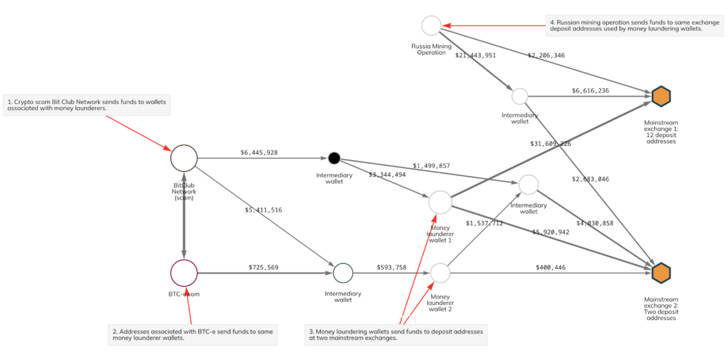Cryptocurrency adoption in Latin America is
experiencing explosive growth, driven by a mix of factors in the area like
economic instability, financial innovation, and regulatory evolution. Countries
like Brazil, Argentina, and Mexico are emerging as global leaders in
cryptocurrency usage, offering a fertile ground for both individuals and
businesses to explore digital assets as practical solutions for real-world
financial challenges.
To learn more about Latin America’s rapidly
evolving crypto market, download our whitepaper, “Unlock the Potential of Latin
America’s Booming Crypto Market.”
Read the report on the Latam’s blooming cryptocurrency market.
The rising wave of crypto in Latin
America
Cryptocurrency adoption in Latin America is
accelerating, fueled by inflation and currency devaluation. In Argentina, where
inflation has devastated the peso, Bitcoin and stablecoins have played an
important role in protecting savings. Around 15% of the population uses crypto
regularly, finding it a critical hedge against inflation.
In Brazil, crypto is even being integrated
into mainstream finance. The country was one of the first to approve
cryptocurrency exchange-traded funds (ETFs), and by 2023, the value of USDT
transactions was equivalent to $55 billion, more than 80% of its crypto volume.
This makes Brazil a key player in the global crypto market.
Mexico has carved out a niche in crypto
remittances, with Bitso processing over $3.3 billion in cross-border payments
in 2022. Crypto is emerging as a more efficient solution for these
transactions, benefiting millions of families reliant on remittances.
Regulatory evolution driving market growth
The regulatory environment across Latin
America is evolving, creating opportunities for businesses to expand. For example,
El Salvador made history by becoming the first country to adopt Bitcoin as
legal tender, with further initiatives like Bitcoin-backed bonds and a
government-sponsored crypto wallet. This bold experiment has positioned El
Salvador as a global trailblazer for cryptocurrency adoption, even as its
long-term effects are being evaluated.
Meanwhile, Mexico’s fintech law from 2018
recognized cryptocurrencies as virtual assets, establishing a clear regulatory
pathway for businesses. This clarity has helped companies like Bitso thrive. Meanwhile,
Colombia’s regulatory sandbox has promoted crypto experimentation in a
controlled environment, attracting fintechs and positioning the country as a
future hub for innovation.
Argentina, while still working on a
comprehensive regulatory framework, has seen increased interest in crypto
regulation under its new pro-crypto government. Colombia’s sandbox model is
providing fintechs with a controlled environment to test their offerings,
positioning the country as an emerging leader in the digital asset space as
well.
Emerging opportunities
Despite infrastructure and regulatory
challenges, Latin America offers immense opportunities for crypto growth.
Argentina and Venezuela, with their hyperinflationary economies, continue to
see widespread crypto adoption as citizens seek alternatives to their unstable
currencies. Stablecoins like USDT and USDC can help individuals and businesses
in these countries by providing greater financial stability.
Mexico’s growing role in crypto remittances
and Colombia’s fintech-friendly environment highlight the region’s potential
for further expansion. Tokenization is another area of growth, with Brazil’s
agricultural commodity token project, Agrotoken, revolutionizing access to
credit for small farmers. Brazil’s Drex initiative also highlights the
country’s commitment to developing a fully digital economy and integrating
blockchain technology into mainstream financial systems.
Latin America’s complex economic landscape,
combined with its openness to crypto solutions, makes it an exciting market for
businesses seeking to leverage digital assets. By addressing regulatory and
payment infrastructure challenges, companies can unlock the full potential of
this rapidly evolving crypto market.
The role of payment solutions in this evolving
market
Cross-border payments and regulatory
complexities are significant hurdles for businesses expanding into the Latin
American crypto market. The region’s rising demand for remittances, along with
fragmented payment infrastructures, means businesses must navigate
multi-currency transactions. Additionally, evolving regulatory landscapes
require businesses to stay compliant while managing operational risks.
Paysafe addresses these challenges by
offering solutions that streamline cross-border payments, supporting multiple
currencies and reducing transaction costs. With strong integration into key
local systems, Paysafe helps businesses deliver the seamless payment options
customers expect.
Furthermore, Paysafe’s regulatory expertise
ensures businesses remain compliant across diverse markets, while its advanced
security features protect against fraud, providing businesses with the trust
and reliability they need to thrive in the region’s fast-growing crypto
ecosystem.
Conclusion
Latin America is a prime market for
cryptocurrency adoption and its growth shows no sign of slowing down. From the
pioneering efforts of El Salvador to the sophisticated regulatory framework in
Brazil, the region offers diverse use cases for businesses looking to enter or
expand their crypto operations. Our whitepaper highlights that despite
challenges like regulatory fragmentation and cultural nuances, Latin America
presents tremendous opportunities for growth.
For more detailed insights and strategies,
download our whitepaper, “Unlock the Potential of Latin America’s Booming
Crypto Market.”
Read the report on the Latam’s blooming cryptocurrency market.
By leveraging Paysafe’s comprehensive
payment solutions, businesses can seamlessly navigate the complexities of the Latin
American crypto landscape, unlocking the full potential of one of the world’s
fastest-growing markets.
Disclaimer:
This article is not intended to be
financial, investment or trading advice. This article is for information and
solely for education purposes. It does not protect against any financial loss,
risk or fraud.
Why Paysafe
Paysafe supports Latin American businesses
with over 25 years of experience, offering top-tier fraud, risk, and compliance
support. Their solutions streamline cross-border payments, support multiple
currencies, and reduce transaction costs, enabling confident expansion in the
crypto market.
Cryptocurrency adoption in Latin America is
experiencing explosive growth, driven by a mix of factors in the area like
economic instability, financial innovation, and regulatory evolution. Countries
like Brazil, Argentina, and Mexico are emerging as global leaders in
cryptocurrency usage, offering a fertile ground for both individuals and
businesses to explore digital assets as practical solutions for real-world
financial challenges.
To learn more about Latin America’s rapidly
evolving crypto market, download our whitepaper, “Unlock the Potential of Latin
America’s Booming Crypto Market.”
Read the report on the Latam’s blooming cryptocurrency market.
The rising wave of crypto in Latin
America
Cryptocurrency adoption in Latin America is
accelerating, fueled by inflation and currency devaluation. In Argentina, where
inflation has devastated the peso, Bitcoin and stablecoins have played an
important role in protecting savings. Around 15% of the population uses crypto
regularly, finding it a critical hedge against inflation.
In Brazil, crypto is even being integrated
into mainstream finance. The country was one of the first to approve
cryptocurrency exchange-traded funds (ETFs), and by 2023, the value of USDT
transactions was equivalent to $55 billion, more than 80% of its crypto volume.
This makes Brazil a key player in the global crypto market.
Mexico has carved out a niche in crypto
remittances, with Bitso processing over $3.3 billion in cross-border payments
in 2022. Crypto is emerging as a more efficient solution for these
transactions, benefiting millions of families reliant on remittances.
Regulatory evolution driving market growth
The regulatory environment across Latin
America is evolving, creating opportunities for businesses to expand. For example,
El Salvador made history by becoming the first country to adopt Bitcoin as
legal tender, with further initiatives like Bitcoin-backed bonds and a
government-sponsored crypto wallet. This bold experiment has positioned El
Salvador as a global trailblazer for cryptocurrency adoption, even as its
long-term effects are being evaluated.
Meanwhile, Mexico’s fintech law from 2018
recognized cryptocurrencies as virtual assets, establishing a clear regulatory
pathway for businesses. This clarity has helped companies like Bitso thrive. Meanwhile,
Colombia’s regulatory sandbox has promoted crypto experimentation in a
controlled environment, attracting fintechs and positioning the country as a
future hub for innovation.
Argentina, while still working on a
comprehensive regulatory framework, has seen increased interest in crypto
regulation under its new pro-crypto government. Colombia’s sandbox model is
providing fintechs with a controlled environment to test their offerings,
positioning the country as an emerging leader in the digital asset space as
well.
Emerging opportunities
Despite infrastructure and regulatory
challenges, Latin America offers immense opportunities for crypto growth.
Argentina and Venezuela, with their hyperinflationary economies, continue to
see widespread crypto adoption as citizens seek alternatives to their unstable
currencies. Stablecoins like USDT and USDC can help individuals and businesses
in these countries by providing greater financial stability.
Mexico’s growing role in crypto remittances
and Colombia’s fintech-friendly environment highlight the region’s potential
for further expansion. Tokenization is another area of growth, with Brazil’s
agricultural commodity token project, Agrotoken, revolutionizing access to
credit for small farmers. Brazil’s Drex initiative also highlights the
country’s commitment to developing a fully digital economy and integrating
blockchain technology into mainstream financial systems.
Latin America’s complex economic landscape,
combined with its openness to crypto solutions, makes it an exciting market for
businesses seeking to leverage digital assets. By addressing regulatory and
payment infrastructure challenges, companies can unlock the full potential of
this rapidly evolving crypto market.
The role of payment solutions in this evolving
market
Cross-border payments and regulatory
complexities are significant hurdles for businesses expanding into the Latin
American crypto market. The region’s rising demand for remittances, along with
fragmented payment infrastructures, means businesses must navigate
multi-currency transactions. Additionally, evolving regulatory landscapes
require businesses to stay compliant while managing operational risks.
Paysafe addresses these challenges by
offering solutions that streamline cross-border payments, supporting multiple
currencies and reducing transaction costs. With strong integration into key
local systems, Paysafe helps businesses deliver the seamless payment options
customers expect.
Furthermore, Paysafe’s regulatory expertise
ensures businesses remain compliant across diverse markets, while its advanced
security features protect against fraud, providing businesses with the trust
and reliability they need to thrive in the region’s fast-growing crypto
ecosystem.
Conclusion
Latin America is a prime market for
cryptocurrency adoption and its growth shows no sign of slowing down. From the
pioneering efforts of El Salvador to the sophisticated regulatory framework in
Brazil, the region offers diverse use cases for businesses looking to enter or
expand their crypto operations. Our whitepaper highlights that despite
challenges like regulatory fragmentation and cultural nuances, Latin America
presents tremendous opportunities for growth.
For more detailed insights and strategies,
download our whitepaper, “Unlock the Potential of Latin America’s Booming
Crypto Market.”
Read the report on the Latam’s blooming cryptocurrency market.
By leveraging Paysafe’s comprehensive
payment solutions, businesses can seamlessly navigate the complexities of the Latin
American crypto landscape, unlocking the full potential of one of the world’s
fastest-growing markets.
Disclaimer:
This article is not intended to be
financial, investment or trading advice. This article is for information and
solely for education purposes. It does not protect against any financial loss,
risk or fraud.
Why Paysafe
Paysafe supports Latin American businesses
with over 25 years of experience, offering top-tier fraud, risk, and compliance
support. Their solutions streamline cross-border payments, support multiple
currencies, and reduce transaction costs, enabling confident expansion in the
crypto market.






























/cdn.vox-cdn.com/uploads/chorus_asset/file/25782636/247422_ChatGPT_anniversary_CVirginia.jpg)
/cdn.vox-cdn.com/uploads/chorus_asset/file/25789444/1258459915.jpg)

/cdn.vox-cdn.com/uploads/chorus_asset/file/25546252/STK169_Mark_Zuckerburg_CVIRGINIA_D.jpg)

